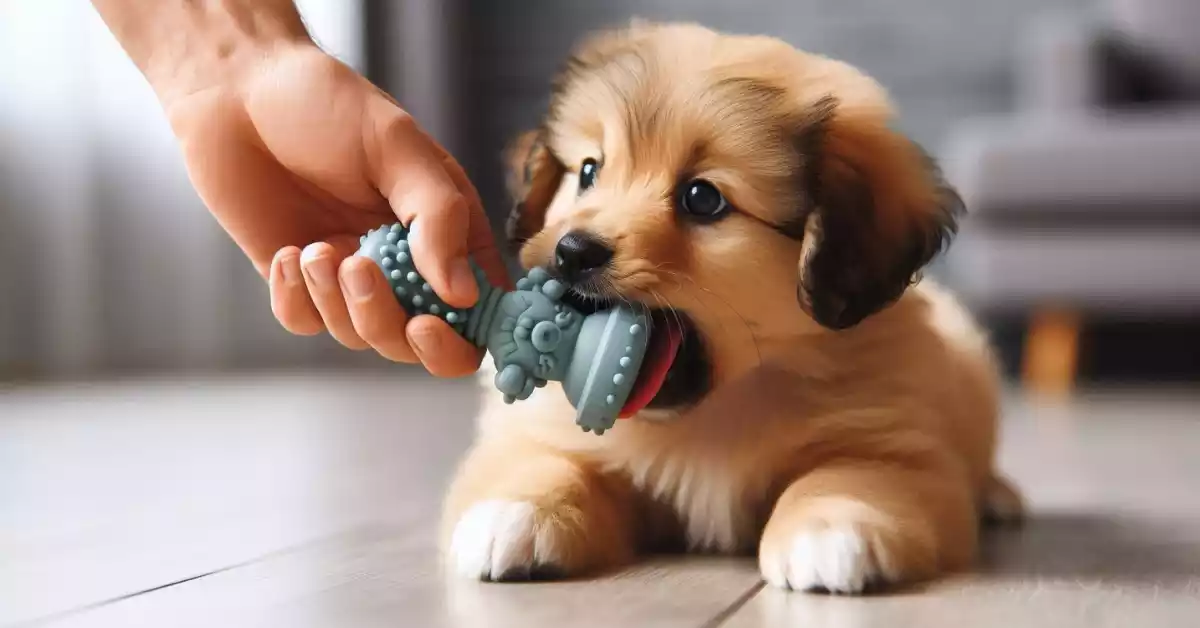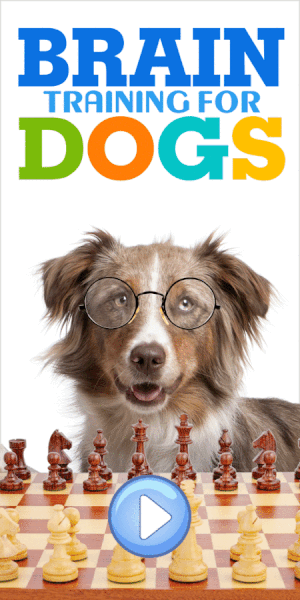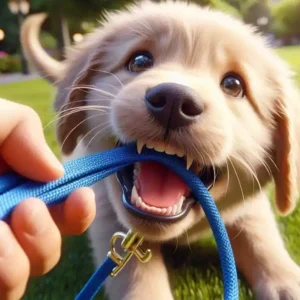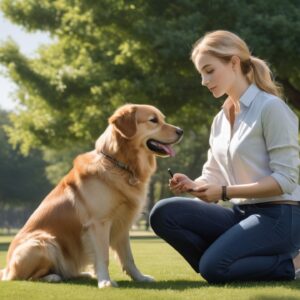
Is your puppy turning playtime into bite time? You’re not alone! Many new dog owners struggle with this common behavior. But the good news is, you can fix it quickly. In this post, you’ll learn how to stop puppy biting fast with simple, proven tips that really work. Let’s help your puppy grow into a well-behaved, happy dog.
Your new puppy’s playful nibbles might seem harmless at first. But those tiny teeth can quickly turn cuddle time into a pain-filled struggle. Every yelp when they sink their jaws into your hand isn’t just uncomfortable—it’s a signal their behavior needs guidance.
Puppies bite to explore their world, relieve teething pain, or play. But without correction, these habits can become lasting issues. The key to stopping puppy biting fast lies in understanding their instincts and redirecting them safely.
Imagine the relief of playtime free from yelps and chewed furniture. This guide shows you how to act now, using methods backed by dog behavior experts.
Early intervention isn’t just about saving your fingers—it’s about building trust and communication with your puppy. By focusing on positive reinforcement and consistency, you can replace biting with healthy habits. Let’s dive into why it matters and how to start today.
Key Takeaways
- Redirect biting to appropriate toys immediately when it happens.
- Consistent responses teach puppies clear boundaries.
- Teething needs peak between 3-6 months—provide chew toys during this phase.
- Positive praise strengthens desired behaviors.
- Ignoring unwanted bites while rewarding calmness reduces repetition.
Understanding Puppy Biting Behavior
Puppies bite for reasons deeper than just play. To prevent this, we must understand their instincts. Teething, exploration, and communication drive much of this behavior. Let’s break down why it happens and what’s typical.
The ASPCA states that puppies use their mouths to explore their environment, much like human babies use their hands.
Reasons Behind the Behavior
- Exploration: Puppies discover textures and tastes through mouthing objects.
- Teething: Sharp puppy teeth erupting cause discomfort, leading them to chew.
- Communication: Biting can signal frustration or excitement.
- Play: Puppies practice hunting behaviors with littermates, transferring this to human interactions.
How Normal Is It?
Mild biting is natural up to 4–6 months old. Puppies use mouths like toddlers use hands. But, if bites are too hard or last too long, it might mean they’re anxious or not socialized enough. Watch how often and how hard they bite. If it’s too much or lasts past 6 months, see a vet or trainer.
Knowing these patterns helps fix the problem. By balancing correction with positive guidance, your puppy learns boundaries without losing their natural instincts.
Recognizing the Causes of Excessive Biting

Figuring out why your puppy bites is key to solving the problem. Puppies might chew hard because of teething pain, stress, or not knowing what to do. Knowing what causes it helps you pick the best tips to stop puppy biting.
- Teething: Puppies chew on things like furniture or hands to ease gum pain.
- Anxiety: Biting can go up if your puppy feels scared or left out.
- Overstimulation: Too much play can lead to nipping.
A clear plan shows how to act:
| Cause | Signs to Watch For | Action Steps |
|---|---|---|
| Teething | Constant chewing, swollen gums | Offer rubber toys and watch playtime |
| Anxiety | Hiding, whining | Create a quiet spot with calming music |
| Overstimulation | Increased nipping during play | Take 5-minute breaks to reset energy |
Using these tips to stop puppy biting with patience builds trust. Consistent actions teach your puppy what’s okay, cutting down on future problems.
Essential Puppy Training Techniques

Puppy training is about building trust and clear communication. Start by rewarding calm behavior with treats or praise. This positive reinforcement teaches them that good actions get attention.
Positive Reinforcement
- Offer a treat when your puppy chooses a toy over biting.
- Use a happy tone saying “Good choice!” to mark correct behavior.
- Ignore unwanted actions briefly to avoid accidental rewards.
Consistency in Commands
Always use the same phrases like “No bite” every time. Mix verbal cues with gestures, like holding up a hand. Repeat routines daily, even when your puppy resists. Experts agree consistency helps puppies learn faster.
“Consistency turns temporary rules into lasting habits.” — Dr. Jane Miller, Animal Behavior Specialist
Pair commands with rewards immediately. Over time, your puppy will connect words to actions without needing treats. These methods build a foundation for long-term behavior improvements.
Effective Steps to Stop Puppy Biting
Redirecting your puppy’s energy is key to successful puppy behavior correction. Immediate action prevents habits from forming. Pair these steps with patience to see quick results.
Implement Quick Redirection
- Stop play the moment teeth touch skin. Say “No” firmly and walk away.
- Offer a chew toy like a rubber bone or rope. Praise when they take it.
- Repeat daily to reinforce the link between biting and losing attention.
Avoid Reinforcing Undesirable Behavior
- Never yell or hit—this worsens anxiety and aggression.
- Withdraw attention immediately. Ignoring the puppy teaches consequences.
- Replace hands with toys during play. Let them mouth appropriate items.
Tools and Toys That Curb Biting

Choosing the right toys is crucial for solving puppy biting issues. Chew toys give your puppy a safe way to express their natural biting urge. This reduces the chance of them biting hands or furniture. Look for durable chew toys that can handle strong jaws and help with teething.
- Rubber chew toys like KONG Classic or Nylabone offer tough material that withstands vigorous chewing.
- Frozen peanut butter-stuffed toys soothe sore gums while redirecting biting impulses.
- Rope toys from brands like Premier provide texture to engage their mouths without causing harm.
“Appropriate toys reduce unwanted behavior by channeling energy into acceptable outlets,” says Dr. Emily Hall, a certified dog behaviorist. “They’re not just playthings—they’re training tools.”
Choose toys with different textures to keep your puppy engaged. Stay away from toys that break easily, as they can be a choking hazard. Change toys every week to keep playtime exciting and effective. Always watch your puppy during play to teach them good chewing habits.
Search for toys labeled as “teething-safe” or “durable for power chewers.” Materials like natural rubber or long-lasting nylon are great for puppies. Use toys with praise to help your puppy associate play with good behavior.
How to Prevent Puppy Biting During Play

Playtime is essential for bonding with your puppy. It’s also a common time for biting. To stop this, turn play into a learning experience. This way, your puppy learns boundaries without losing energy.
Safe Playtime Practices
Follow these steps for fun, bite-free play:
- Choose toys made for chewing, like durable rubber balls or rope knots.
- Stay at your puppy’s eye level to avoid accidental nips during high-energy games.
- Pause play if biting starts, saying “No bite” calmly before resuming.
Handling Overstimulation
Puppies get overwhelmed easily. Signs like stiffened posture or rapid panting mean they’re overstimulated. When this happens:
- Redirect their focus to a toy instead of hands or clothing.
- End the session gently and offer a quiet space for them to calm down.
Being consistent in these steps helps set limits while keeping play positive. Dog training for biting works best with patience and clear signals.
Puppy Behavior Correction Strategies

Effective puppy biting behavior modification starts with clear communication. Strategies like redirecting actions and rewarding good choices help shape positive habits. Consistent responses teach your puppy what’s expected.
“Successful behavior modification focuses on replacing unwanted actions with acceptable ones,” note experts in dog training.
- Use a firm “No” followed by offering a chew toy to redirect focus.
- Practice short training sessions daily to reinforce lessons without overwhelming them.
- Pair gentle pressure on their mouth (if nipping) with a calm “No bite” command, then reward when they stop.
Consistency builds trust. Track progress weekly to adjust methods as needed. Celebrate small wins to keep your puppy motivated during this process.
Developing a Consistent Training Routine

Creating a daily routine makes puppy biting training a habit. It helps your pup learn what’s okay and what’s not. Start with small steps, be patient, and watch your pup grow.
Daily Training Schedule
- Set 5–10 minute sessions twice daily, like morning and evening.
- Incorporate puppy biting training exercises using chew toys or bite-inhibit drills.
- End each session with praise to reinforce positive outcomes.
Tracking Progress Effectively
Keep track of your pup’s progress with these tips:
- Keep a checklist for each training goal.
- Note the frequency of biting incidents in a journal.
- Adjust methods if progress stalls.
| Day | Activity |
|---|---|
| Monday | Redirect biting with chew toys |
| Tuesday | Practice “gentle” command training |
| Wednesday | Review progress checklist |
| Thursday | Short play session with praise |
| Friday | Repeat key exercises |
Practice 3–5 days a week. Small steps lead to big results. Celebrate every little victory to keep you going!
Dealing with Setbacks and Frustrations

Training setbacks are common. If your puppy’s biting doesn’t get better, take a break. Stop training for 24 hours. Think about your methods and how your dog reacts.
Are your commands clear? Do you reward consistently? Even small changes can help a lot.
Reassessing Your Approach
Ask yourself these questions:
- Are sessions too long? Puppies focus best in 5–10 minute bursts.
- Is the environment distracting? Train in quiet spaces first.
- Are all family members using the same rules?
When to Seek Professional Help
Watch for these red flags:
| Sign | Action |
|---|---|
| Biting becomes aggressive | Consult a certified trainer |
| No progress after 2 weeks | Schedule a professional evaluation |
| Puppy shows fear responses | Seek behavior specialist advice |
“Setbacks are learning opportunities, not failures.”
Keep track of progress with a calendar. Note dates, behaviors, and what worked. Share updates with your vet or trainer. This helps align efforts. Patience leads to lasting results.
Integrating Family and Social Interaction in Training
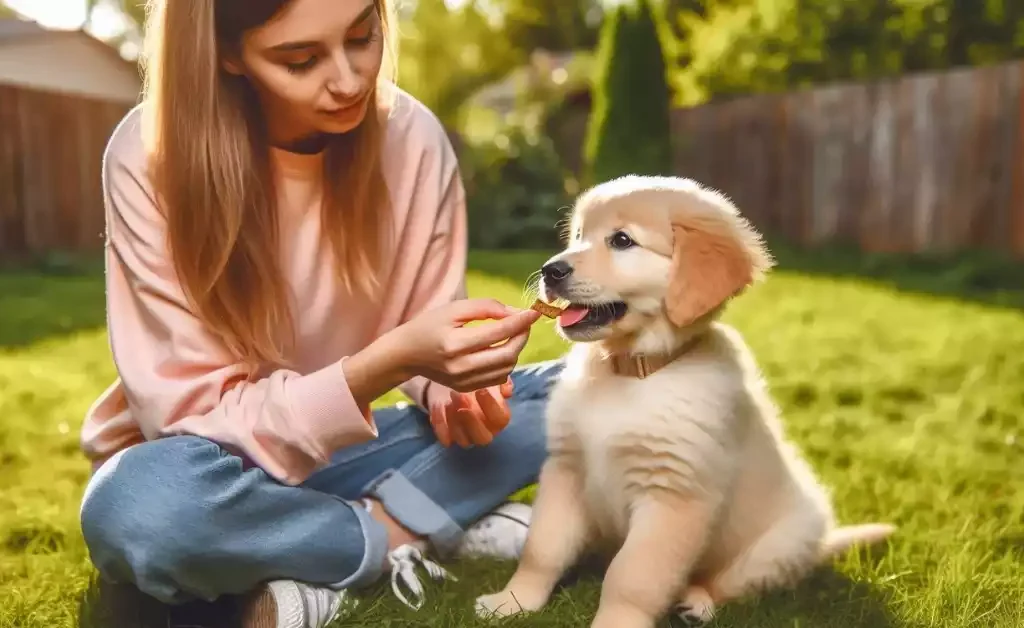
Teaching your puppy to stop biting isn’t just one person’s job. It’s a family effort. Studies show that when everyone uses the same rules, puppies learn faster. This helps avoid confusion and strengthens good habits.
Unified Commands and Boundaries
Being consistent is crucial. Here are some rules to follow:
- Agree on one command like “No bite” for unwanted chewing.
- Set clear rules: no hand play, reward calm behavior only.
- Correct gently but firmly if boundaries are broken.
Involving Everyone in the Process
Make sure everyone plays a part:
| Role | Action |
|---|---|
| Parents | Lead 10-minute daily training sessions. |
| Kids | Offer chew toys during play to redirect biting. |
| Visitors | Follow household rules when interacting with the puppy. |
Regular family meetings help track progress and adjust plans. When everyone is on the same page, training becomes a team effort. This makes stop puppy biting a success for everyone.
🚀 Tired of Painful Puppy Biting? Unlock Your Dog’s Hidden Intelligence!
Struggling with sharp puppy teeth? These tips are just the beginning! Discover Adrienne Farricelli’s proven Brain Training system—used by thousands to transform unruly pups into well-behaved companions.
🔥 Why This Works (When Other Methods Fail):
✅ Certified Expert Guidance – CPDT-KA trainer with 10+ years of experience (featured in USA Today).
✅ Science-Based Games – 21 fun brain exercises to redirect biting and boost obedience.
✅ Fix the Root Cause – Stops biting by addressing boredom, teething, and impulse control.
✅ Force-Free & Positive – No dominance tactics—just trust-building techniques that work.
✅ Instant Access – Get step-by-step videos, troubleshooting guides, and a private support forum.
🎁 Special Offer: Try Brain Training for Dogs today for just $67 (60-day money-back guarantee)!
👉 Click Here to Stop Biting FAST! 👈
Conclusion
Stopping puppy biting needs patience and consistency. We’ve shared steps like positive reinforcement and safe toys. Tools like KONG toys or Nylabone help change chewing habits. Clear commands during training teach boundaries.
It’s important to start early and work together as a family. Everyone should use the same commands and rules. This avoids confusion for your puppy. The American Kennel Club (AKC) or ASPCA have more tips for tough cases.
Being gentle and praising good behavior is key. If you hit a roadblock, talk to a certified dog trainer. With effort, your puppy will learn to interact gently. This will make your bond stronger and your pet happier.
FAQ
What are the main reasons puppies bite?
Puppies bite for many reasons. They do it to explore, because of teething pain, and during play. Knowing why they bite helps you know when it’s okay and when it’s not.
How can I quickly stop my puppy from biting?
To stop puppy biting fast, give them chew toys instead. Use positive words when they play gently. And don’t do things that make them want to bite more.
What specific training techniques are effective for modifying biting behavior?
Good training methods include positive reinforcement and clear commands. Also, play in a structured way to teach them not to bite.
What tools or toys can help curb puppy biting?
Choose chew toys that are safe and durable. They should be made of different materials and textures. This helps with teething and keeps your puppy safe.
How can I prevent puppy biting during playtime?
To stop biting during play, keep play sessions short and fun. Use toys instead of your hands. Make sure play is safe and controlled.
What strategies can I use for correcting my puppy’s behavior?
Teach them to control their bites slowly. Give them feedback consistently. Use methods approved by experts to change their biting habits.
How can I develop a consistent training routine for my puppy?
Create a daily training plan that fits your life. Keep track of your puppy’s progress. This will help make training a regular part of their life and reduce biting.
What should I do if I encounter setbacks while training my puppy?
If training gets tough, think about changing your approach. Look for signs that you might need help from a pro or need to adjust your plan.
How can family members be integrated into the puppy training process?
Get everyone in the family involved. Use the same commands and rules. This makes training faster and makes it a team effort to stop puppy biting.
Why is consistency important in preventing puppy biting?
Being consistent is key. It helps your puppy learn good habits. Every interaction should teach them to be gentle and well-behaved.
